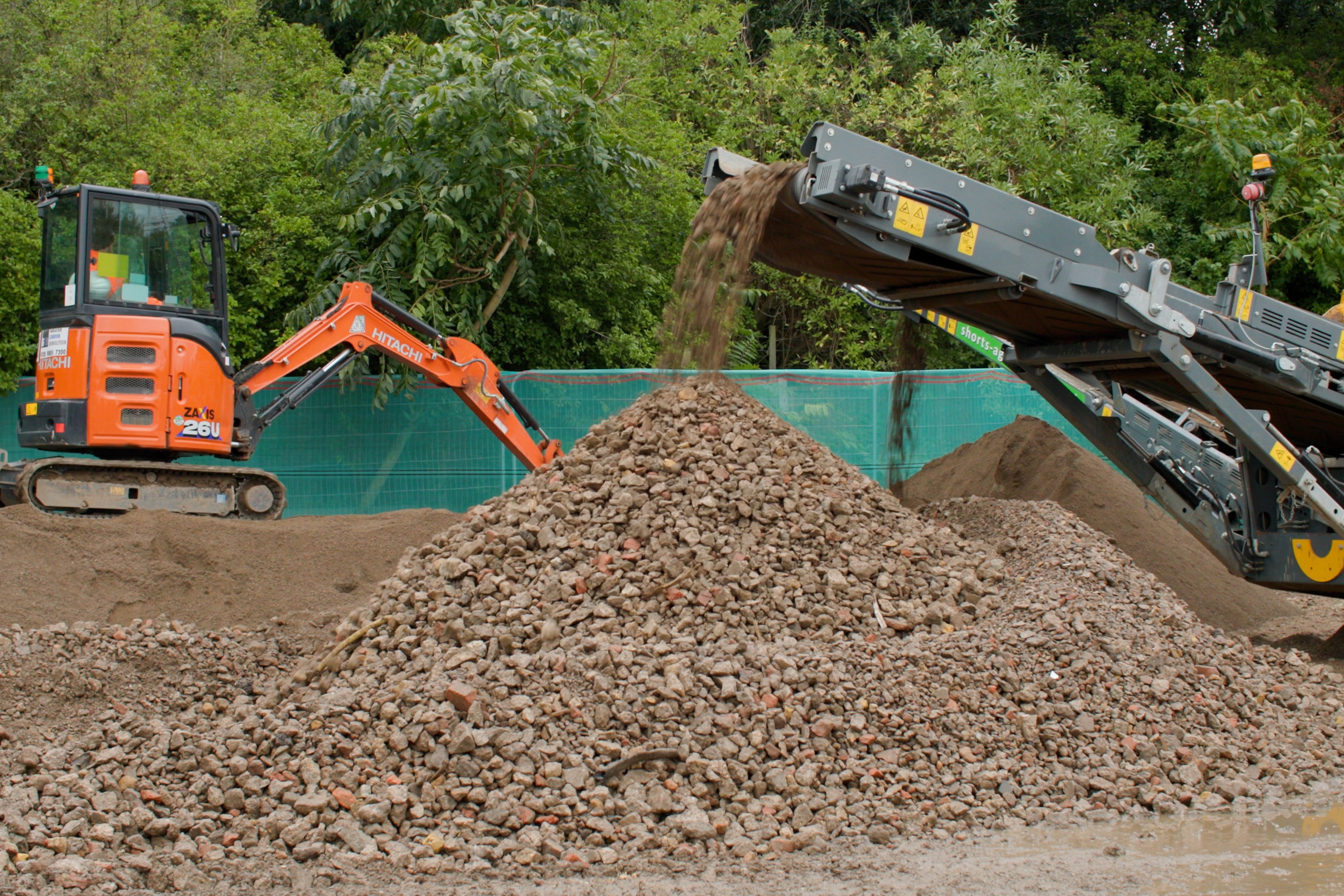It is not a material that is synonymous with royalty or sustainable gardening. But when Regent’s Park in London tasked its gardeners with creating a new climate-resilient garden to commemorate the life of Queen Elizabeth II, they came up with a novel method for helping plants to grow: crushed concrete in the soil.
The garden, which will open next April, aims to transform a disused service yard in the royal park into a two-acre landscape filled with plants that can cope with the UK’s changing climate and deliver a 184 per cent net gain in biodiversity.
Crushed concrete will be re-used across the site to create low-carbon paths — but more unusually, it will also be incorporated beneath the surface as part of the soil structure. The park is already conducting a live planting trial to test how mixing crushed concrete with soil can support “climate-resilient” plant growth.
“Crushed concrete, when mixed with soil, creates a free-draining, low-nutrient environment that encourages plants to develop deep, resilient root systems. It improves drainage, boosts aeration and slowly releases minerals like calcium and potassium — all of which help plants adapt to hotter, drier conditions and out-compete weeds,” says Matthew Pottage, head of horticulture and landscape strategy at the Royal Parks.
“By repurposing construction waste onsite, this method transforms concrete rubble into blooming beds — the ultimate urban rewilding — and offers a sustainable, climate-resilient model for public parks.”

A large pond and wildflower meadow will boost pollinator habitats
HTA DESIGN

He revealed that the plans were sent to Buckingham Palace and there has been “an interest” in the project from the King: “There has been an interaction, and it’s been positive.”
When the garden opens next spring, on what would have been Elizabeth’s 100th birthday, Regent’s Park will become the first known public park in the UK to mix crushed concrete into its soil on such a scale.
• Read more expert advice on property, interiors and home improvement
While the material has already been used in high-profile international projects such as New York’s High Line and Singapore’s Gardens by the Bay, the application in a London park is “pioneering for the UK public realm”, according to the Royal Parks.
According to Pottage, the idea of using crushed concrete came about because the site of the garden previously housed a horticultural nursery in greenhouses that were “at the end of their useful life”. He says: “We had this two-acre site in the middle of the Inner Circle of Regent’s Park which needed a new vision — a new lease of life. Traditionally, we would have cleared away the concrete, put it in a skip and shipped in fresh topsoil. But trying to be sustainable, we challenged ourselves to keep it and use it in the garden.”
Mixed with soil on a 50:50 or even a 60:40 basis, the crushed concrete “acts like a sieve”, preventing the soil from holding as much moisture and forcing the plants in the garden to grow more slowly, Pottage explains. “The plants put down a lot more roots, because they’re exploring, looking for more water and nutrients.”
Species set to be planted include amsonia, a sky blue flowering plant native to the North American prairies; Myrtus communis, an evergreen Mediterranean shrub with small white flowers; and Euphorbia myrsinites, an alpine plant with silvery blue leaves and lime-green flowers that is often grown in rock gardens.
• We had to restore a 100-year-old garden before we could build a home
While they may not grow as lush or as tall as they would in moisture-rich soil, plants with deeper roots have more resilience to drought in the summer and wet weather in winter, he says. “With roots that are deep and widespread, a plant can access what it needs but is never in a position of excess: it never has water standing around it.”
This also prevents its leaves from ballooning with water, making the plant less prone to bursting and freezing in winter. “It is hardier and more tolerant to cold weather.”

Concrete salvaged from the demolition of existing buildings
TIM WALKER AT WESTBOUND FILMS

Blending of concrete crush and soil with rotavator arm
TIM WALKER AT WESTBOUND FILMS

Construction of the new garden using salvaged soil and concrete crush
TIM WALKER AT WESTBOUND FILMS
The downside of mixing concrete into soil is that it increases the soil’s alkaline levels. “But it’s surprising how many plants will tolerate that high pH levels — there will be plenty of perennials in the garden that people will recognise, like asters, geraniums, agastache and heleniums,” he says. “It will still look very pretty.”
As well as re-using the concrete salvaged from the site, steel from the old glasshouses has been melted down and will be turned into pergolas for climbing plants. A redundant water tower will be converted into a rainwater store, bat loft and nesting site for swifts and swallows.
As well as a large pond, a 2,000 sq m wildflower meadow will be planted in the innovative soil, in an effort to improve the diversity of the habitat for pollinators. “Although these meadows look great in the first year, normally, what goes wrong is that grass species outcompete wildflowers, which have a weaker constitution and are not very robust,” Pottage says. “We know, from other parts of the park where we’ve done meadows on our clay soil, that we end up with cow parsley and really vigorous grass.”
Using crushed concrete in the soil will be a gamechanger, he predicts. “There won’t be enough nutrients in the soil for the grasses to go ballistic, but wildflowers live longer on poor soil — so this should be a very diverse and long-lived wildflower meadow.”


Comments are closed.